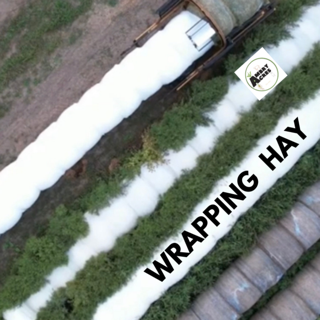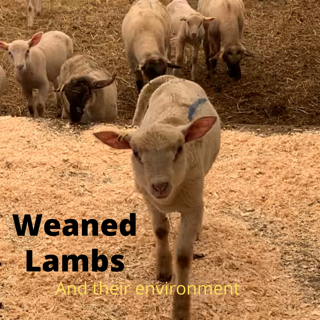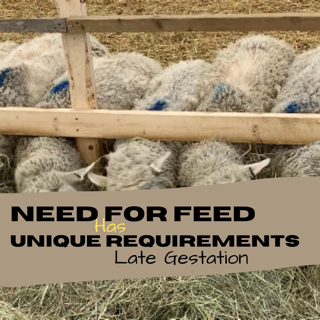Farmers wrap hay bales in plastic for multiple reasons!
Wrapping dry hay has made a big difference on our farm. Integrating this has enabled us to be more resourceful with hay output. The practice of wrapping round dry-hay bales was a solution to three immediate challenges experienced with the traditional practice of baling hay and baleage as feed for our growing herd of 120 beef cow/calf and 300 sheep.
Wrapping Hay. See how this takes place by following along as we wrap a row of bales.
This video shows an in-line wrapper covering about 100 hay bales into a row covered in plastic.
3 Reasons Why We Wrap Our Hay Bales in Plastic
First, it enabled to better protect the hay and sustain its quality over longer periods of time when stored outdoors. And secondly, it streamlined labor resources and time by using the same process and hay tools for both wet and dry hay. Thirdly, it reduces the impact of weather when making hay.
We started by wrapping our wet hay and saw how much less hay we had going to waste. So now, we wrap it all — wet and dry hay. We often use our bales within a year of production. In 2021, we baled 1,000 balelage, alfalfa and rye hay bales; 75% of which were baled dry to be fed to our beef and sheep operations.
Feeding Sheep
We only feed dry bales to our sheep and if there is ever any signs of mold, the bale is not fed to the flock because sheep are more susceptible to the bacteria known as Listeria monocytogenes and can contract listeriosis or ‘circling disease’ more readily than cattle.
Our Processes
We are able to maximize time and resources by producing both wet and dry round bales with a standard process. A lot of the time, we have Tyler cutting, Anne on the rake and when cutting is done, Tyler begins to operate the baler. Then, Bryan starts hauling bales right away,. We haul all our bales to the home farm as a central location where all feed is stored outdoors. A lot of times, we’ll cut hay during the day, next day we rake and bale throughout the afternoon. Ideally, hauling begins at the same time as baling. Often times, we begin wrapping as bales are unloaded from the wagon. We aim to wrap within a 24 hour timeframe and tend to not quit until it’s completed.





